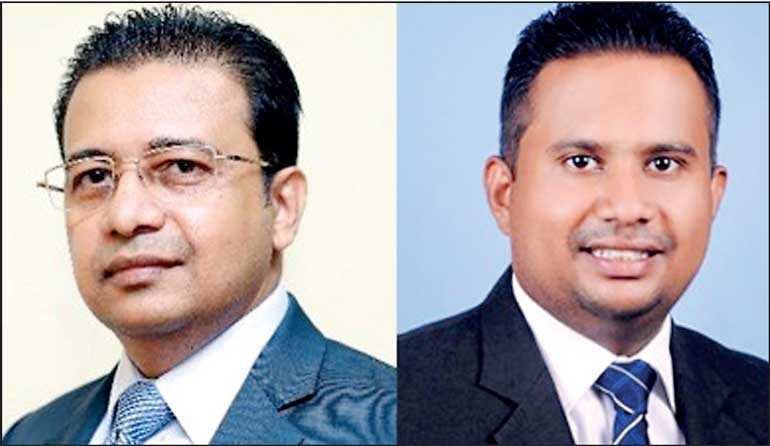Saturday Mar 15, 2025
Saturday Mar 15, 2025
Monday, 28 September 2020 00:00 - - {{hitsCtrl.values.hits}}

EY Sri Lanka Partner, Assurance Sanath Fernando and Partner/Principal, Financial Accounting Advisory Services Rajith Perera
‘A Likely Story?’ a quick guide to practical application of ICAAP and stress testing will be organised by the Financial Accounting Advisory Services (FAAS) Academy of Training of Ernst & Young, Sri Lanka, on 30 September from 9 a.m. to 12 noon, at Jaic Hilton Colombo. The discussion will be highlighting on topics such as the importance of Driving Value through mastering Internal Capital Adequacy Assessment Process (ICAAP) post pandemic in Sri Lanka. Registrations to the event can be made through contacting Thilini Perera on [email protected] or 0115578859.
According to Ernst & Young Sri Lanka Financial Accounting Advisory Services Partner/Principal Rajith Perera, the COVID-19 pandemic represents the biggest test of the financial stability to the financial services sector. Pandemic constitutes unprecedented local as well as global macro-economic stress leading to slowed down economic conditions. Financial system in the country faces the dual challenge to sustain the flow of credit amidst declining growth and to manage the increased risks resulting due to changes in the economic landscape.
The depth and severity of financial shocks are often amplified by inadequate and low-quality capital in the financial services sector. On the other hand, many risks were not appropriately covered by a commensurate amount of capital, owing to weaknesses in banks’ risk identification and assessment. It is therefore of paramount importance to raise the resilience of individual credit institutions in periods of stress by seeking improvements in their forward-looking internal capital adequacy assessment processes (ICAAPs), including comprehensive stress testing and capital planning. To help banks navigate these ambiguities, a thorough analysis of ICAAP practices within the financial services sector in Sri Lanka combined with EY’s experience in ICAAP reviews and implementations. The analysis will help banks to understand current practice and will serve as a guide to the widespread adoption of leading practices to assist them grapple with ICAAP.
In the local context, the biggest challenge, we have seen is the formulation of the risk appetite statement comprising of qualitative and quantitative elements inclusive of financial and non-financial risk. Banks could consider different approaches when formulating their risk appetite statements. Banks could use more sophisticated and refined systems to create joint perspective on capital, funding and risk and return by including Return on Equity (ROE), Return on Risk Adjusted Capital (RORAC), Risk Adjusted Return on Capital (RAROC). Many of these metrics could play an important role when allowing banks to understand the interdependencies to aid them in formulating risk appetite limits. The discussion organised by EY will further identify and elaborate best methodology and recommendation.
Discover Kapruka, the leading online shopping platform in Sri Lanka, where you can conveniently send Gifts and Flowers to your loved ones for any event including Valentine ’s Day. Explore a wide range of popular Shopping Categories on Kapruka, including Toys, Groceries, Electronics, Birthday Cakes, Fruits, Chocolates, Flower Bouquets, Clothing, Watches, Lingerie, Gift Sets and Jewellery. Also if you’re interested in selling with Kapruka, Partner Central by Kapruka is the best solution to start with. Moreover, through Kapruka Global Shop, you can also enjoy the convenience of purchasing products from renowned platforms like Amazon and eBay and have them delivered to Sri Lanka.
Discover Kapruka, the leading online shopping platform in Sri Lanka, where you can conveniently send Gifts and Flowers to your loved ones for any event including Valentine ’s Day. Explore a wide range of popular Shopping Categories on Kapruka, including Toys, Groceries, Electronics, Birthday Cakes, Fruits, Chocolates, Flower Bouquets, Clothing, Watches, Lingerie, Gift Sets and Jewellery. Also if you’re interested in selling with Kapruka, Partner Central by Kapruka is the best solution to start with. Moreover, through Kapruka Global Shop, you can also enjoy the convenience of purchasing products from renowned platforms like Amazon and eBay and have them delivered to Sri Lanka.